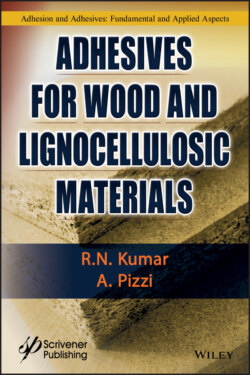Читать книгу Adhesives for Wood and Lignocellulosic Materials - R. N. Kumar - Страница 55
2.4.1 Mechanical Theory
ОглавлениеMcBain and Hopkins [13] first proposed the concept of “mechanical adhesion” in their classical paper “On adhesives and adhesive action”.
According to McBain and Hopkins, there are two kinds of adhesion: mechanical and specific adhesion. Specific adhesion involved interaction between the adherend surface and the adhesive. This interaction might be chemical interaction or adsorption.
Mechanical adhesion occurs “whenever a liquid adhesive penetrates into the porous adherend and solidifies in situ in the pores”. Examples are adhesion to wood, unglazed porcelain, pumice, and charcoal.
The surface of a substrate is never truly smooth but consists of a maze of peaks and valleys. This type of topography allows adhesive to penetrate and fill these valleys, displace the entrapped air, and secure mechanically in position inside the substrate similar to the operation of the Velcro.
Porosity and roughness of the substrate increase the total area of contact between the adhesive and the adherend. Hence, roughening the adherend surface enhances the mechanical interlocking since total effective area over which the forces of adhesion can develop increases. The mechanical adhesion theory does not take into account the intrinsic incompatibility between the adhesive and the substrate.
